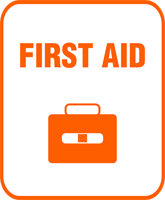 Too often, first aid tips are passed off as fact when they’re based on outdated information or old wives tales. Here are a few that still persist even in 2016:
Too often, first aid tips are passed off as fact when they’re based on outdated information or old wives tales. Here are a few that still persist even in 2016:
Ingesting Vomiting Always Works
In the old days, if someone swallowed some cleaning fluid or something, the immediate response was to induce vomiting to get the poison out of their system. There are times when inducing vomiting can help, but you should never do this before speaking with Poison Control. Many poisons can do just as much damage coming back up as they did going in. Many poisons, like the chemicals found in laundry detergent, can be counteracted with milk. Milk will curdle the chemicals and make them difficult for the stomach to digest.
Tourniquets Are A First Line Of Defense
Tourniquets are a major compromise: In the most extreme of emergencies, a tourniquet might save a person’s life, at the expense of the injured limb. When encountering a serious wound, you want to stop the bleeding with direct pressure to the cut itself with a clean cloth (or paper towel, bandage, t-shirt, whatever you can get your hands on) while somebody calls 911.
Butter Can Help A Burn
Rubbing an oil all over a burn is actually not a very good idea. Ice, cold water and topical ointments are really your only option until help arrives.
Soak A Sprain In Hot Water
This can actually increase swelling. The correct response is rest, ice, compression wrap, and elevate, or RICE.
Staying Awake Can “Fix” A Concussion
The main reason you don’t want someone to fall asleep after a head injury is so that you can monitor their condition. You can’t check the pupil dilation when someone’s eyes are closed. For serious head injuries, immediate medical attention is absolutely necessary. Keeping a person awake will not guarantee that they’re fine.
Tilt Your Head Back To Stop A Nosebleed
This will only result in blood getting into your stomach or lungs. Better to sit up straight and apply pressure to the flesh part of the nose just below the bone. Hold it for ten minutes straight without letting up to check if it’s stopped until the ten minutes have passed.
Let Your Wound Breathe





